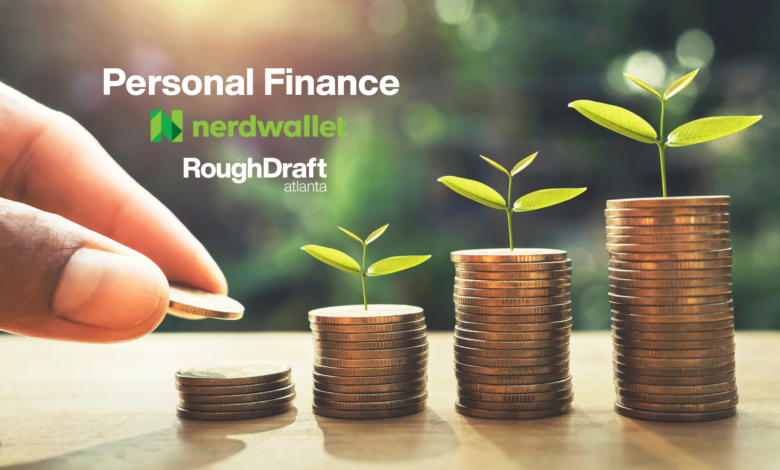Debt payoff strategies and financial tips for the new year


The end-of-year holidays can be a particularly indulgent time, full of looser schedules, crowded dinner plates and, yes, overextended budgets.
Americans were expected to spend $902 on average on holiday expenses in 2024 — a new record — according to the National Retail Federation, which tracks consumer spending. If any of those expenses ended up on your credit cards, you might be wondering how to get your balances under control in the new year.
Valerie Rivera, a certified financial planner based in Chicago, says it’s normal for her clients to see the start of the year as an opportunity to reign in spending.
“I always equate personal finance to physical health,” she says. “It’s almost like you go on a binge in December and then in January it’s like, ‘Okay, time to detox and get my health right.’”
If tackling debt is at the top of your 2025 resolution list, but you’re not sure where to start, these four steps can help guide the way.
1. Know what you owe
They say you can’t know where you’re going until you know where you’ve been — and by “they,” we mean financial planners.
Before making a plan, it’s important to list debts one-by-one, including the balance and interest rate, so you can get a true idea of what you owe, says Samantha Gorelick, a certified financial planner and accredited financial counselor based in New York City.
Be forewarned, though: This may be the toughest step, because of the emotions in play.
“We’re taught to feel ashamed of our credit card debt almost, and a lot of personal responsibility is layered on it,” Gorelick says. “But it’s often a systemic failure that leads to debt.”
Maybe your wages haven’t kept pace with inflation, or your health insurance wouldn’t cover a big medical bill.
No matter the cause, don’t waste time on shame, even if you just plain overspent. Many people find themselves in debt at some point and can find their way out.
2. Commit to a payoff strategy
Once you have the full picture of your debt, it’s time to decide on a payoff strategy.
Debt consolidation — the process of rolling multiple debts into one payment, usually with the help of a balance transfer card or a debt consolidation loan — is a good option for unsecured debts like credit cards.
Consolidation makes the most sense if you can qualify for an interest rate that’s lower than your current debts.
For example, credit cards have an average annual percentage rate of about 23%, according to the latest data from the Federal Reserve. If you use a debt consolidation loan to pay off all your credit cards at once, then pay back the new loan at 15% APR, you’ll save money on interest and can get out of debt faster by applying the savings back toward your principal debt.
It can be hard to qualify for a balance transfer card, or a low enough rate on a debt consolidation loan, unless you have good credit. Gorelick works with clients to pay off a few small debts before consolidating, since this can bump their credit score by lowering their credit utilization ratio.
“You get halfway in that process and realize, wow, my credit score is suddenly in the 700s,” Gorelick says. “At that point, you can apply for a personal loan to refinance the rest of those balances and combine them into one.”
If you don’t want to refinance, there are other ways to pay off debt, like the snowball or avalanche method.
With the snowball method, you pay off your smallest debt, then the second-smallest and so on, building momentum as you go. With the avalanche method, you pay off the debt with the highest interest rate first, then the second-highest and so on, freeing up more and more cash to apply to your debts.
3. Don’t ignore your emergency fund
Both Rivera and Gorelick advocate building your emergency fund even as you work to get out of debt. That’s because one unexpected expense could seriously set you back.
Funneling just $20 a month into an emergency fund adds up quicker than you think, Gorelick says, and can be enough to prevent you from putting a minor repair on a credit card. If possible, automate a monthly withdrawal from your checking account to a high-yield savings account that’s “out of sight, out of mind,” she says.
As you pay down debt, you’ll likely free up more cash. You can put this money toward your emergency fund, too, until you’re able to cover a few months of expenses. Patience here is key, Rivera says.
“If the bigger goal is three months worth of expenses, it might take some people two years to get there, and that’s okay.”
4. Know when to ask for help
If you feel like you’re sinking under the weight of your debt, you might need outside help.
Ads for debt relief services are everywhere, and most are for debt settlement, which is when a third-party helps negotiate down your debts, so you pay less than you owe. It sounds good in theory — especially if you think you’ll never be able to repay the full amount — but it’s risky, and settled debts stay on your credit report for up to seven years.
“Those programs do work for some people, but it creates a lot of damage to your credit in the process, which isn’t always disclosed when you sign up for the program,” Gorelick says.
A debt management plan, offered by a nonprofit credit counseling agency, is a safer alternative. When you enroll in a debt management plan, a credit counselor negotiates better terms for your debts, like lower interest rates, then creates a plan for you to pay back the debt over three to five years.
Unlike debt settlement, a debt management plan won’t cause lasting damage to your credit, since you’re paying back the full amount you owe, just with better terms.
https://roughdraftatlanta.com/wp-content/uploads/2024/08/Untitled-40-1.png
2025-01-09 16:04:11




